Exploring the Best Places to Visit in Varanasi with Gitika
At first sight, Varanasi looks like any other overgrown, chaotic, and congested Indian town. But standing on the steps of one of its many ghats (a series of steps leading to the river) overlooking the expansive Ganga river, I was struck by the presence that only a city as ancient and layered as Varanasi could possess.
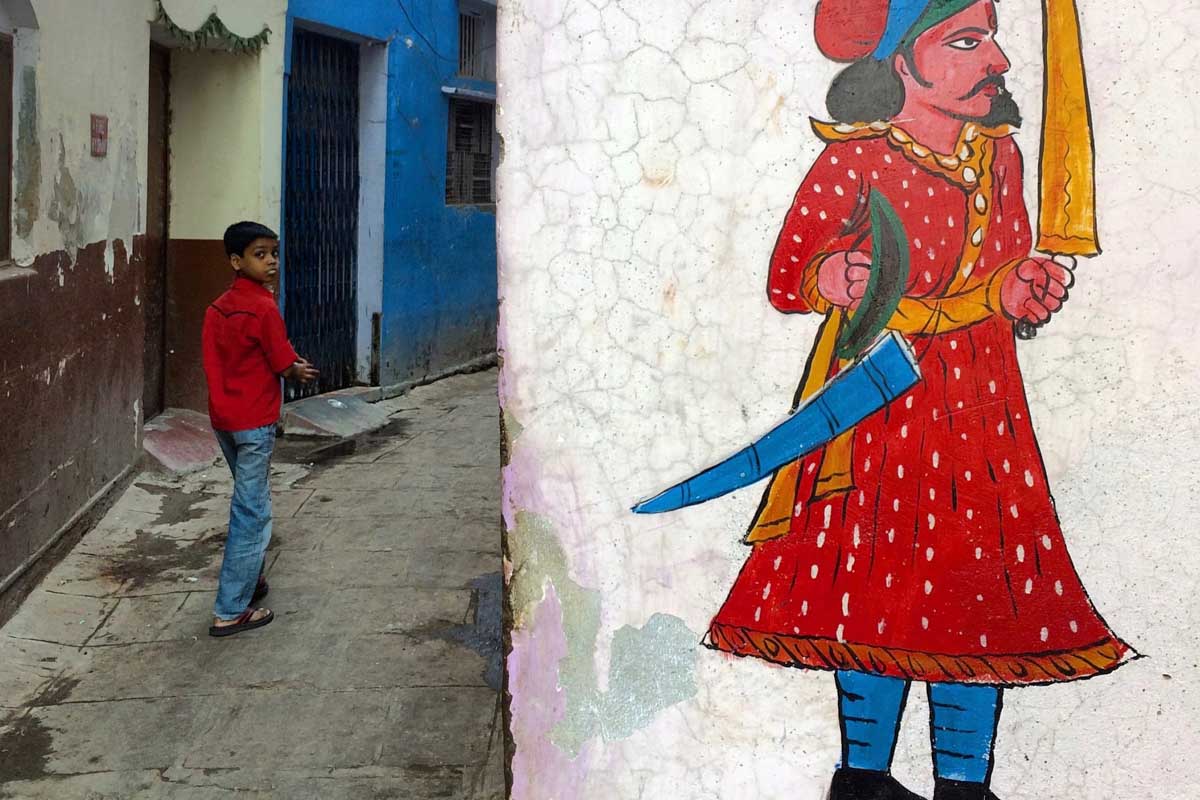
“Benares (Varanasi) is older than history, older than tradition, older even than legend, and looks twice as old as all of them put together” – Mark Twain
Assi Ghat: Morning Prayers
While the ceremony of evening prayers at Dashashwamedh Ghat attracts more tourists, the Subah-e-Banaras (the morning of Varanasi) event at Assi Ghat has its own charm.
The ghat is clean, and there are fewer crowds with the prayers starting at 4:30 a.m. Priests in saffron satin robes offer prayers to the sun, holding up and perfectly coordinating movements of heavy, multi-layered brass lamps.
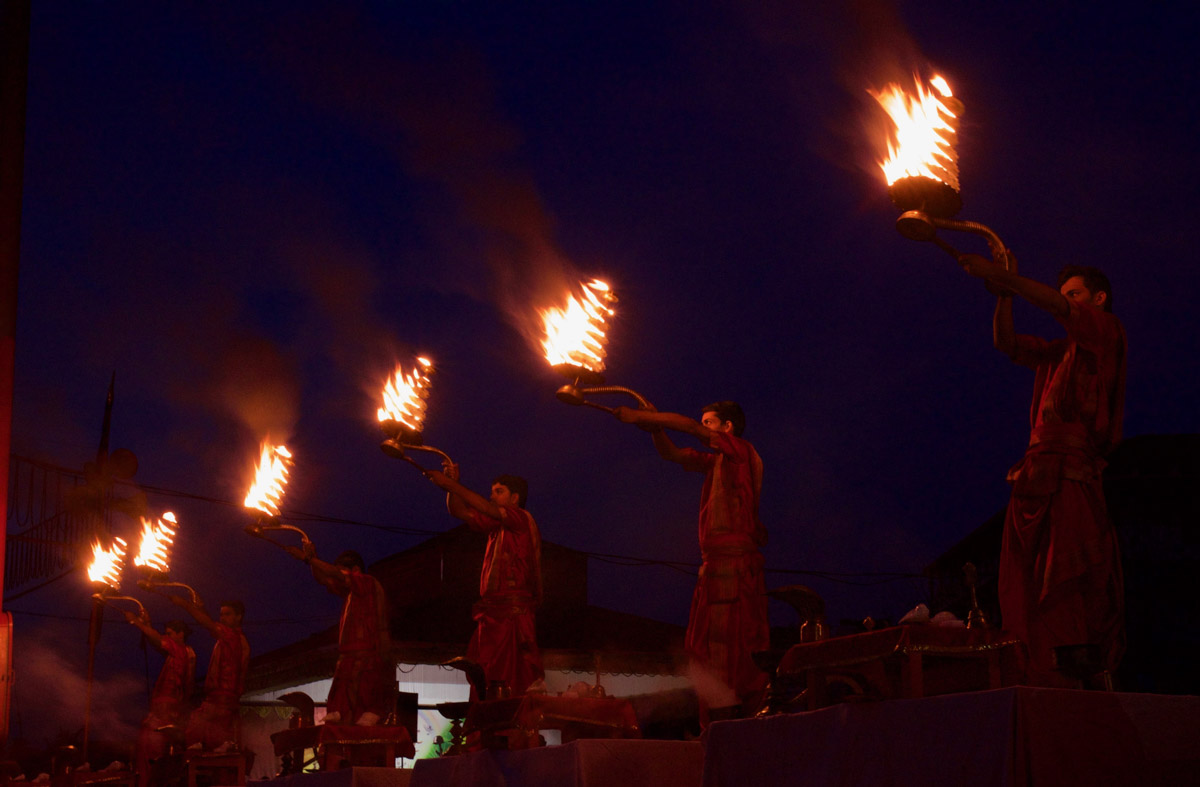
As I watched them, the sky went from dark blue to a pink-hued indigo. The flames from the oil lamps lent a great contrast, along with their smoke trails. A stream of Vedic chants played in the background. What a start to the day!
The Ghats: A Walk Down History
After breakfast, I took a walk down a few of Varanasi’s Ghats. Varanasi has some 80-odd Ghats, all lined up on one side of the Ganga river. And all with their own stories.

Some had people bathing or taking a dip in the holy waters. Others had yards of sarees drying in the sun. Forgotten, cursed ruins laid behind one Ghat. And a solitary meditating ascetic at another. Some were eponymous, named after famous people over the ages who had made Varanasi their home. Others were named after princely states, having been adopted by their reigning, royal families.
Tulsi Ghat gets its name from the famous poet Tulsidas. I climbed the steep steps leading up to what was once his house, now a temple as well, and was warmly welcomed by the priests who take care of it. Inside a tiny room is the spot where Tulsidas sat and wrote the 12,800 lines’ long epic, Ramcharitramanas.
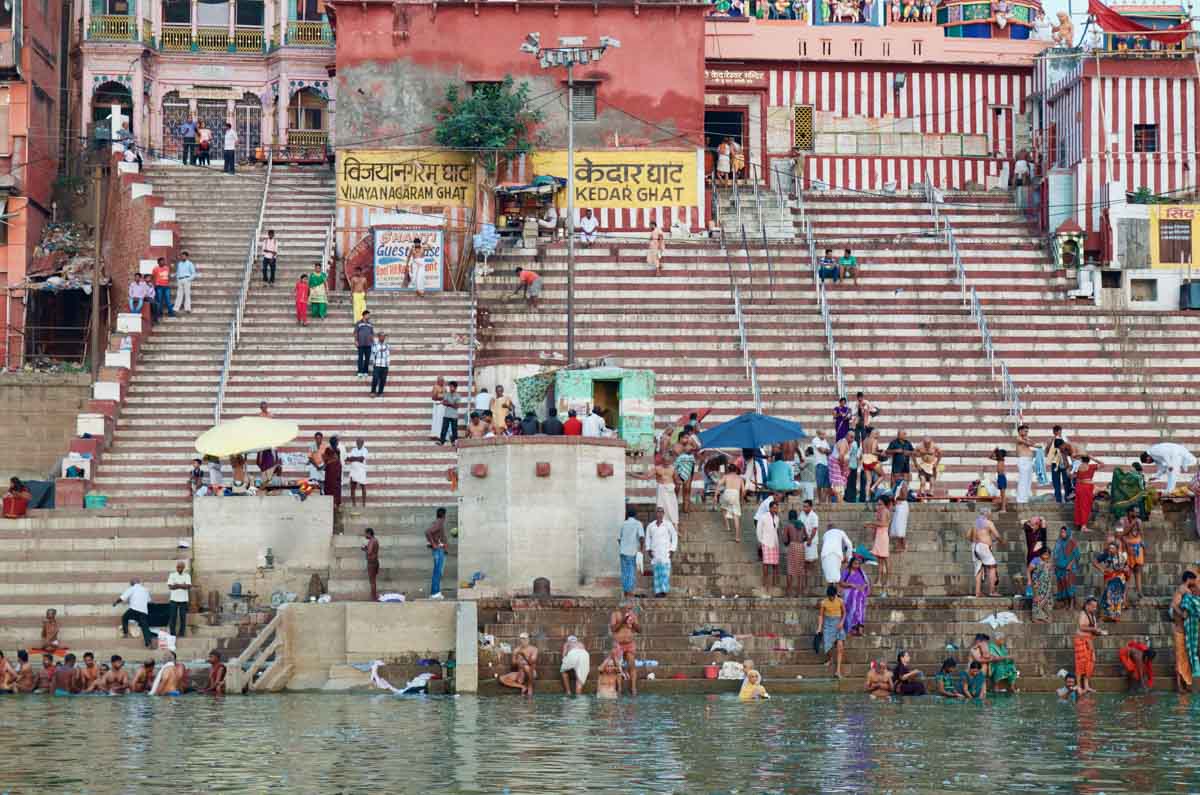
The Blue Lassi: Nirvana in a Tumbler
Within the serpentine network of lanes right behind its Ghats, at the Kachori Gali Chowk, hides The Blue Lassi Shop – nearly a century old and a bit of a legend in Varanasi. The tiny hole-in-the-wall establishment has every inch of wall-space plastered with photographs left behind by happy patrons.
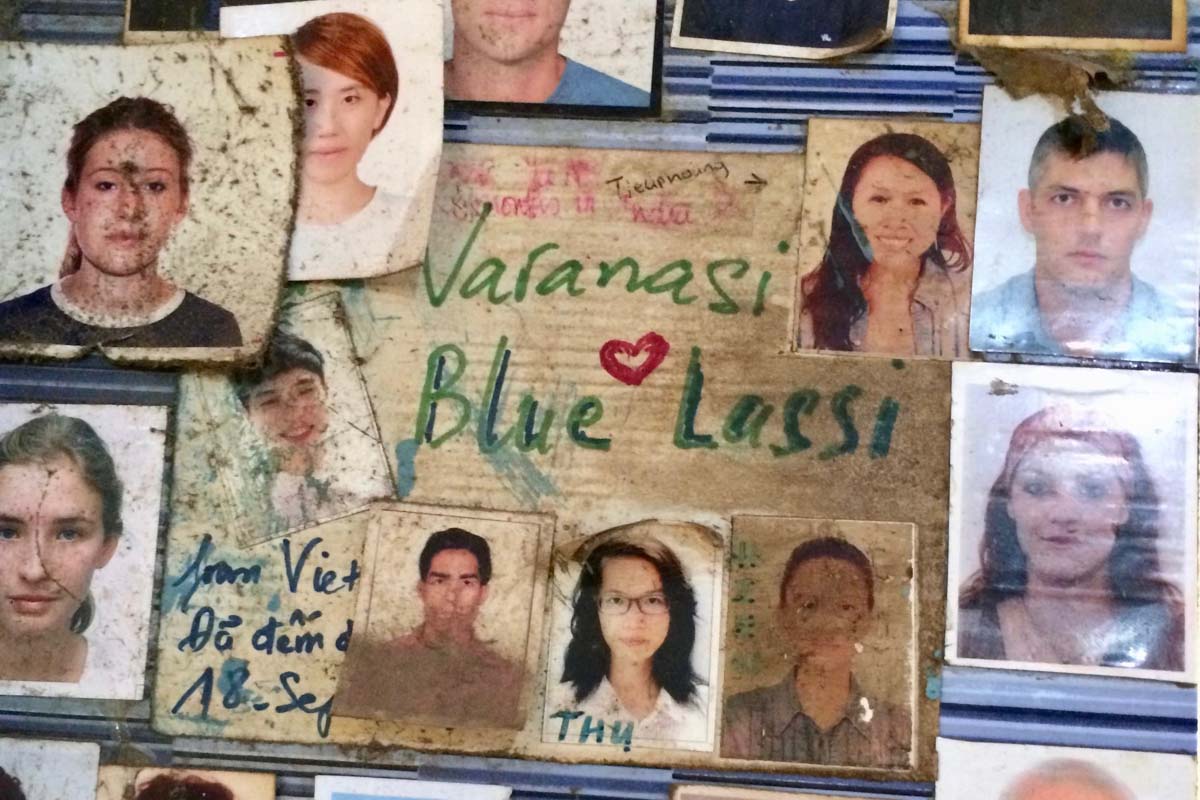
Watching the proprietor churn fresh Lassi (a yogurt-based drink) inside a steel Handi (a deep, wide-mouthed vessel), I counted down my increasingly loud stomach growls.
Once there was enough froth, the concoction was poured into a Kulhad (a terracotta tumbler), a thick layer of fresh cream added, and flakes of pistachios sprinkled on top. Grabbing the Kulhad, I glugged the Lassi down with relish. After a long walk in the sun, the Lassi lent me my personal Nirvana.
Banarasi Saris: A Weaver’s Work of Art
I had signed up for a walk with Varanasi Walks. My guide took me to the district where ornate Banarasi Saris are still woven. A prized possession in any wedding trousseau in India, these Saris attract buyers from the world over, even now.

Today, automated looms are the norm. But in Varanasi, it is not difficult to come across a weaver labouring over his handloom. I discovered one such workshop. A solitary tungsten bulb flickered, illuminating the web of silk threads hung above the loom. And with each clickety-clack motion, the weaver bound them together into an intricately woven, magical fabric.
The Ramlila Masks: Varanasi’s Rich Tradition
Varanasi is famous for its Ramlila – the traditional theatrical narration (of the life of Lord Rama) performed daily for a month preceding the Hindu festival of Dussehra.
A Varanasi resident guided me to a small shop in Godowlia Market that stocked Ramleela paraphernalia – a wonderland of paper mache masks, idols, and miniatures. An hour later, I proudly walked out with a bagful of Ramleela masks as well as a wooden miniature of Hanuman. New Agrawal Toys Emporium at Assi Ghat is also a great place to pick up souvenirs and trinkets.
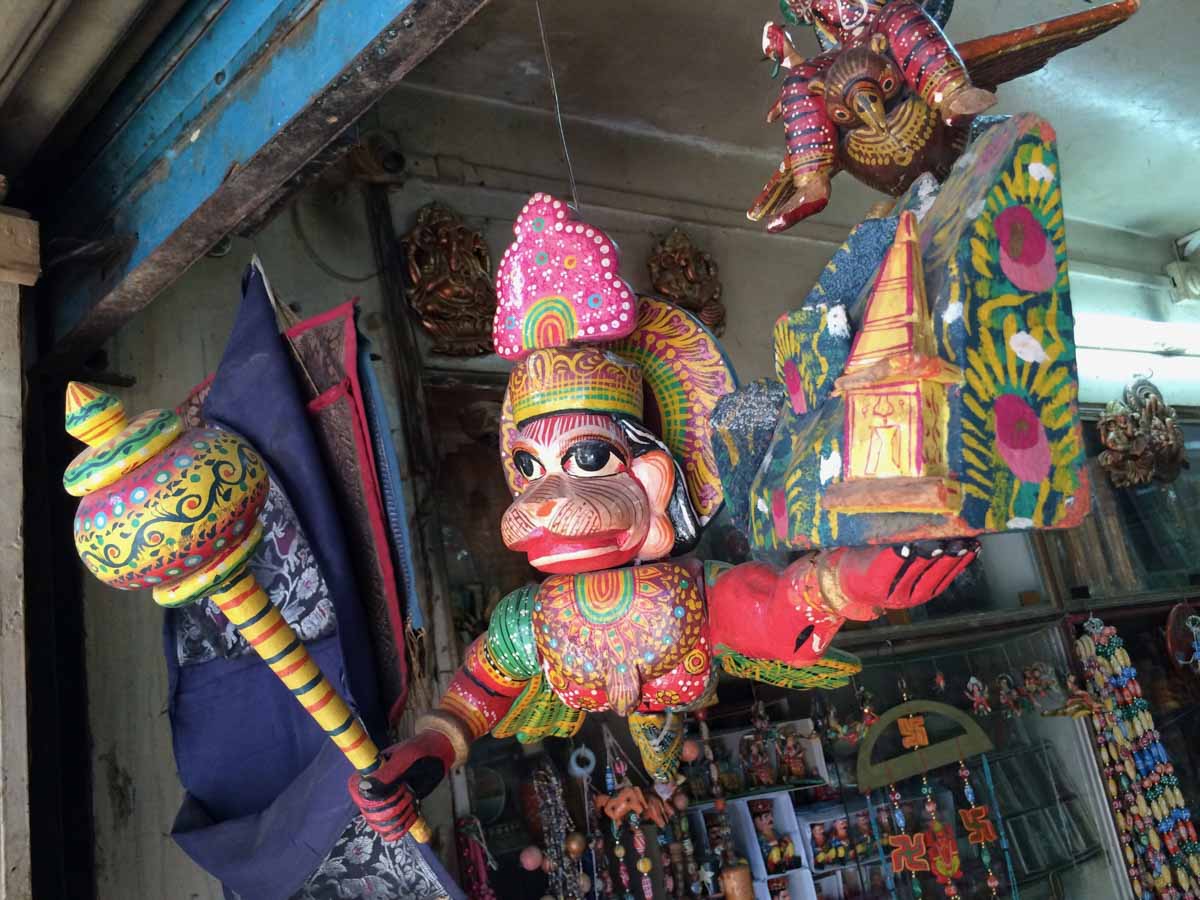
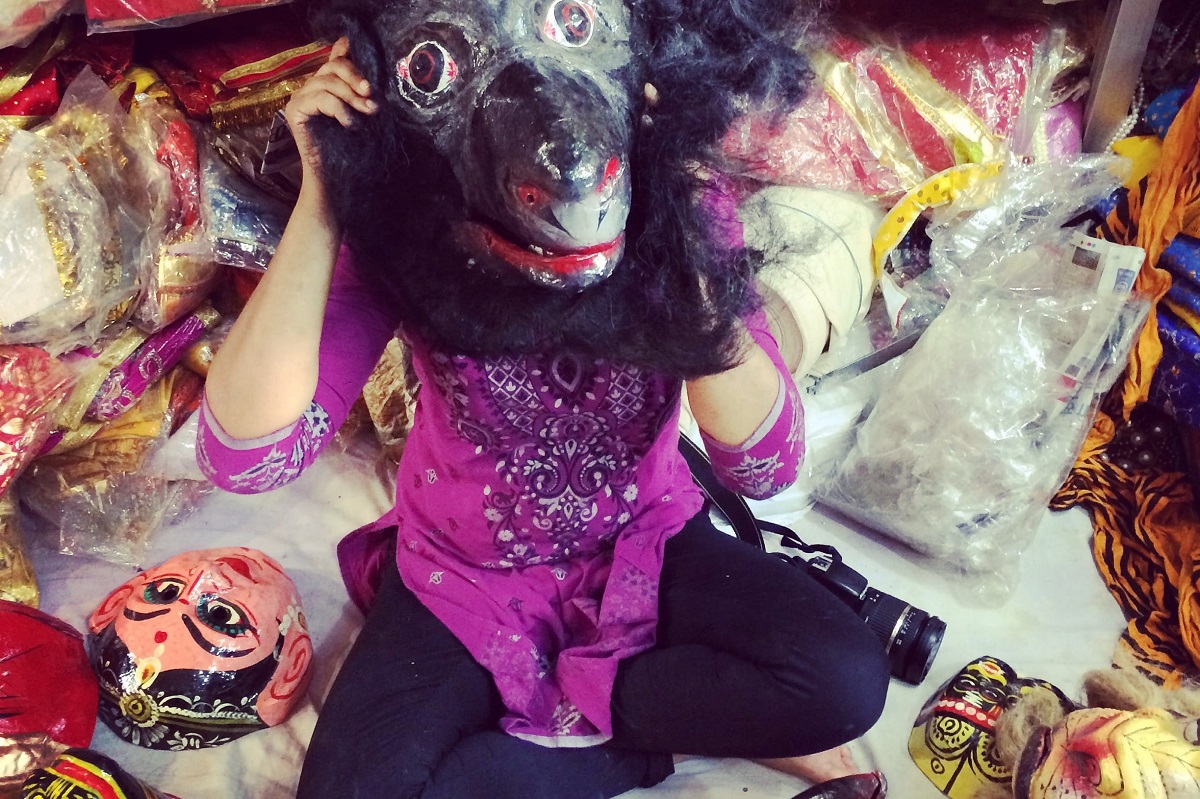
An Evening Boat Ride in Varanasi: An Ode to the Ganga
As twilight set in, I returned to the Ghats. People of all ages gathered on the steps. Traders sold their wares. Boatmen solicited customers.
Sitting in my boat, rocking gently in the mid-stream waters, I felt calm and detached. Tiny lamps floated across the river. At a distance, I could see the bright amber flames of the burning pyres at the Manikarnika Ghat.
“The circle of life that moves us all till we find our place on the path unwinding.” In Varanasi, I found mine.
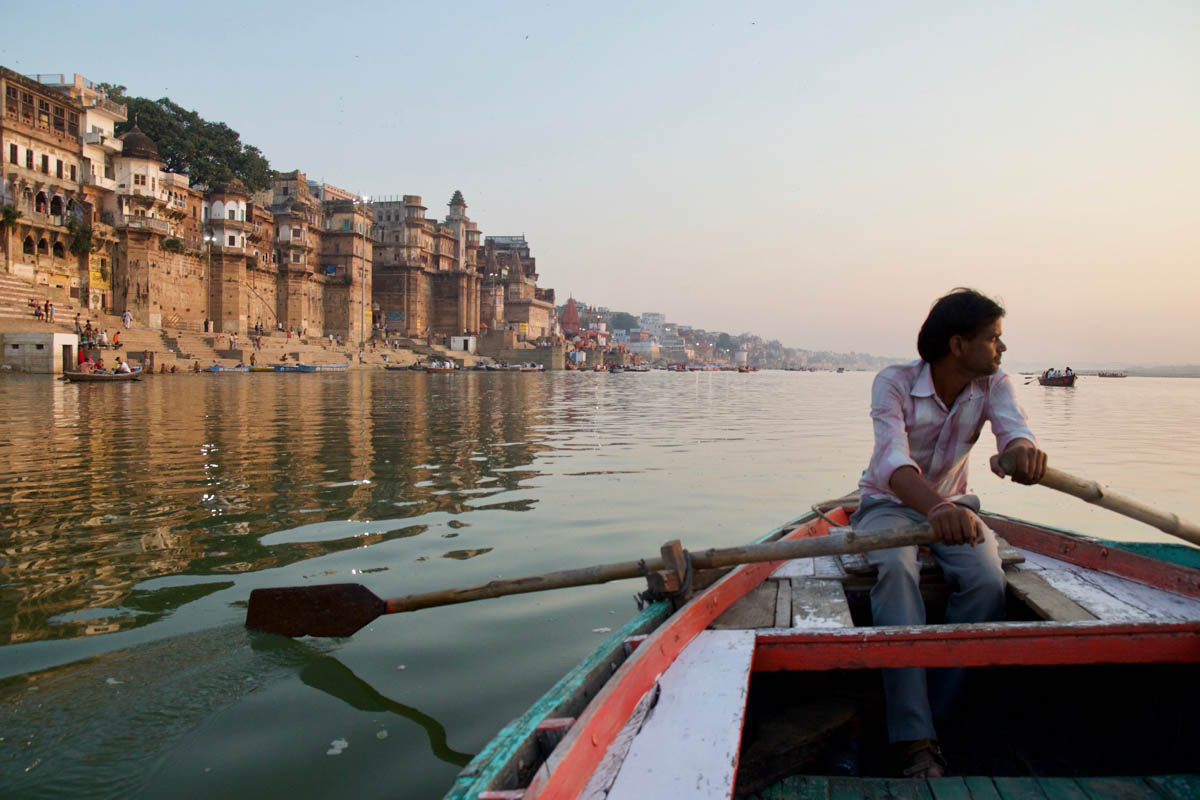
[tabs]
[tab title=”Best Time to Visit Varanasi” icon=”entypo-sun”]
Winter (October to March) is the best season to visit Varanasi. You can also experience the Hindu festivals of Dussehra, Durga Puja, and Diwali in the months of October or November (dates change each year as per the Hindu calendar). It gets really hot in the summers, but crowds are much lesser.[/tab]
[tab title=”Where to Stay” icon=”entypo-suitcase”]
I would highly recommend staying at a Varanasi hotel or guest house on the banks of Ganga river to catch the sunrise. Suryauday Haveli and BrijRama Palace are two options to consider.
[button style=’blue’ url=’https://www.expedia.co.in/Varanasi-Hotels.d3724.Travel-Guide-Hotels’ icon=’entypo-suitcase’ fullwidth=’true’] Find Hotels in Varanasi[/button][/tab]
[tab title=”Getting There” icon=”entypo-flight”]
[button style=’blue’ url=’https://www.expedia.co.in/Cheap-Flights-To-Varanasi.d3724.Travel-Guide-Flights’ icon=’entypo-suitcase’ fullwidth=’true’] Find Flights to Varanasi[/button][/tab]
[/tabs]
More Articles With Cultural
Goa is a remarkably affordable holiday destination, complete with luxurious beaches, delicious food and stunning landscapes. It is a region of India where attitudes and dress codes are relaxed and visitors to this scenic region are guaranteed to find a wealth of memorable experiences. 7 Fun Things to do in Goa Beyond the Beaches 1)… Continue reading Goa Beyond the Beaches: 7 Great Things to Experience
In one of my pensive modes that came with my profession as a writer, looking at the bright screen, sitting in the dark cave that was my haven the other times, I realised I needed to pause. The best of escapes are the ones from where you returned with a purpose, a perspective or a… Continue reading “Wagah-Bonding”: Shedding inhibitions along the Indo-Pakistan borders
Kochi or Cochin is lovingly called the Queen of the Arabian Sea. Once a flourishing port, today Kochi is a major metropolis in the southern Indian state of Kerala. This city is a mixture of many cultures. During the colonial era, it was first occupied by the Portuguese, then the Dutch and finally the British.… Continue reading The Gateway to Old India: 7 Places in Kochi That Will Transport You Back in Time
Winter and Rajasthan are one of the most lethal combinations when it comes to a vacation! We explored the “City of Lakes,” Udaipur, during winter when it’s more cooling and windy. Accommodation in Udaipur On top of a mountain, with the cold and foggy weather, one can find Fatehgarh Palace with its quintessential Rajasthani marble inlays, chowks… Continue reading Sightseeing in Udaipur Through its Rich Heritage
At first sight, Varanasi looks like any other overgrown, chaotic, and congested Indian town. But standing on the steps of one of its many ghats (a series of steps leading to the river) overlooking the expansive Ganga river, I was struck by the presence that only a city as ancient and layered as Varanasi could possess. “Benares… Continue reading Exploring the Best Places to Visit in Varanasi with Gitika